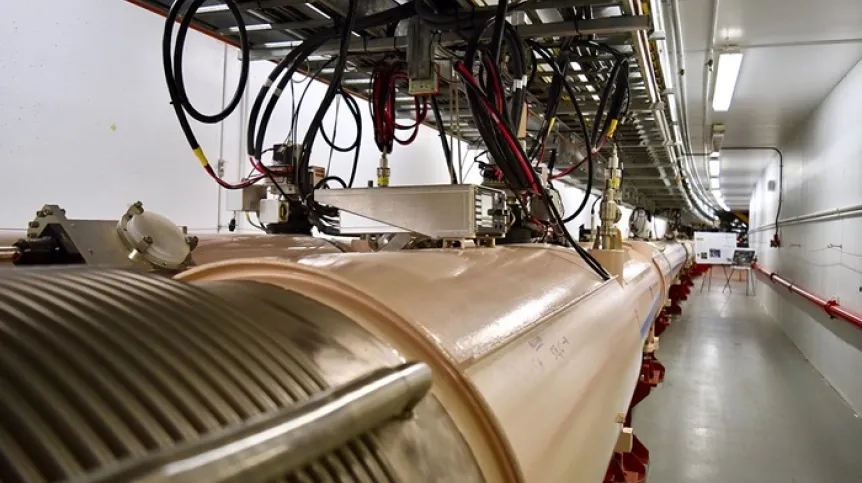
An antimatter hypernucleus consisting of four aniparticles has been detected at the American RHIC (Relativistic Heavy Ion Collider). Antihyperhydrogen-4 is the heaviest exotic nuclear structure in the world of antimatter discovered so far. Polish scientists also participated in the STAR experiment.
At Brookhaven National Laboratory, as part of the STAR experiment at the Relativistic Heavy Ion Collider (RHIC) - an 'atom smasher' that recreates the conditions of the early Universe - scientists have observed not only individual antimatter particles, but also their entire structures: nuclei consisting of four particles: an antiproton, two antineutrons and one anti-Lambda hyperon - antihyperhydrogen-4. The paper describing the discovery was published in Nature.
The most common atomic nuclei in our environment consist of neutrons and protons. These, in turn, consist of down and up quarks. However, there are structures analogous to neutrons and protons that contain quarks that are unusual for ordinary matter - strange quarks. If some neutrons, protons and a hyperon combine, a hypernucleus is formed. Researchers working at RHIC produced such a hypernucleus from antimatter.
More than a decade earlier, an antihelium-4 nucleus had been observed. Now it was time for a more exotic nucleus.
This is quite a challenge, because all these antimatter particles had to be produced very close to each other and at a similar time to be able to combine into a larger nuclear structure. And when they attracted each other to combine, they could not encounter obstacles, because this would lead to annihilation. Meanwhile, in RHIC, annihilation only occurred after an antihypernucleus was created.
Why look for this needle in a haystack?
It was not easy to find signals from such annihilation in the results of experiments, which included data on 6 billion particle collisions collected in the device. Scientists measured, among other things, the decay times of antihypernuclei and their counterparts from the world of matter. This is another idea for searching for differences between matter and antimatter.
Immediately after the Big Bang, it assumed that equal numbers of matter and antimatter particles should have been produced. A particle and its antiparticle are identical, but have the opposite charge and mirror symmetry. When they meet, annihilation occurs and energy is released. It would seem that all particles and antiparticles during the Big Bang should have been produced in the same amount and quickly transformed into energy in the processes of annihilation. But this did not happen, because for billions of years we, the Universe... and all the rest have existed. After all, we are made of matter, and antimatter is a rare guest here.
Some differences between matter and antimatter must have been responsible for the survival of matter. We have known some of these differences for years, but they would not have been enough to form the Universe. That is why scientists are searching for more differences.
'The fact that an antimatter hypernucleus has been observed opens up new possibilities for studying its properties - not only in the form of recorded cases or estimating lifetimes, but also more advanced measurements concerning, for example, collective behaviour, production mechanisms, decay processes, and even annihilation with matter particles', says Professor Hanna Zbroszczyk from Warsaw University of Technology, whose team is involved in the STAR experiment at RHIC.
PAP - Science in Poland, Ludwika Tomala
lt/ zan/ kap/
tr. RL













